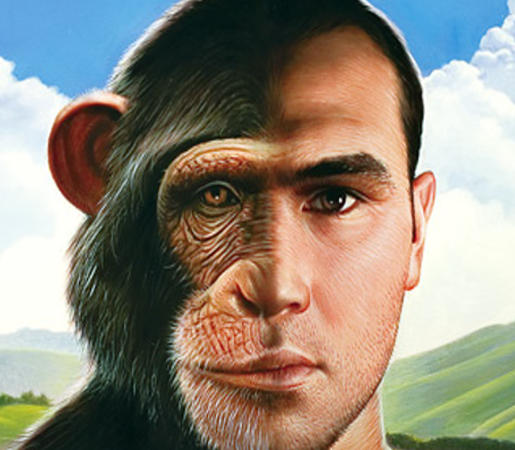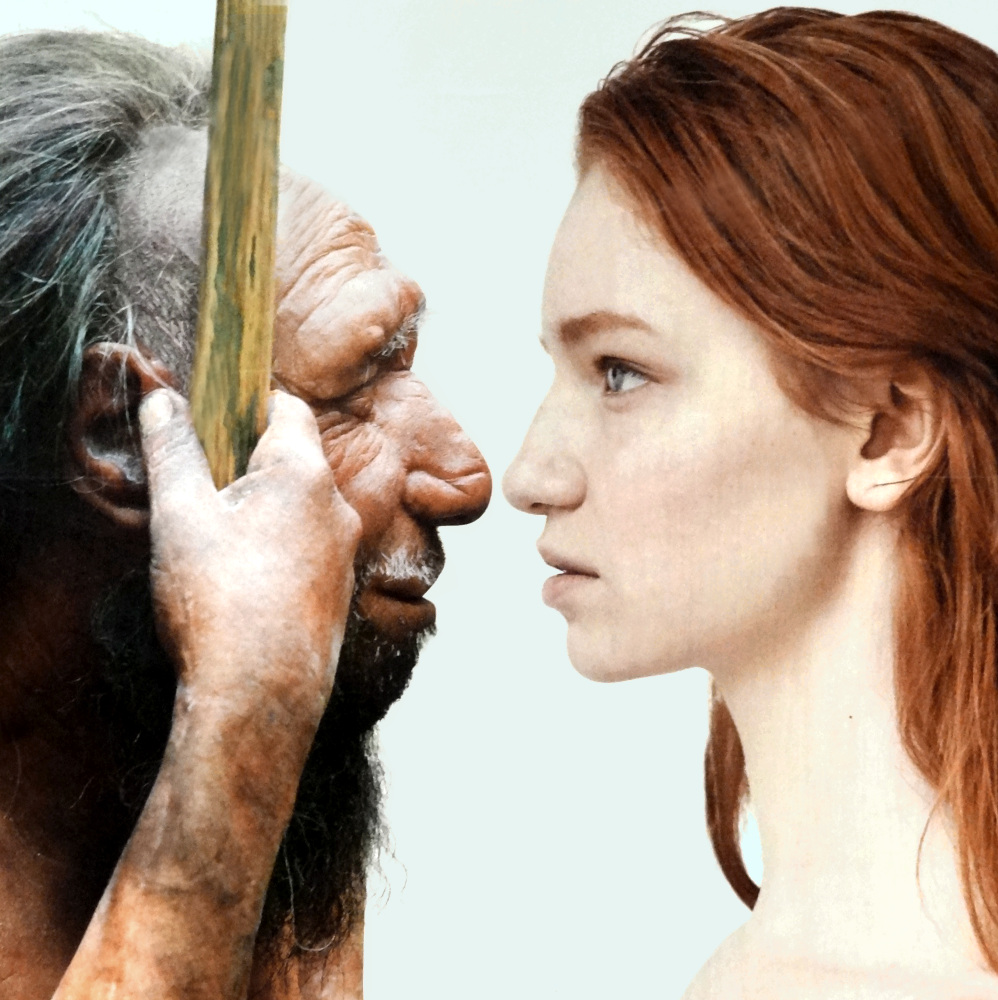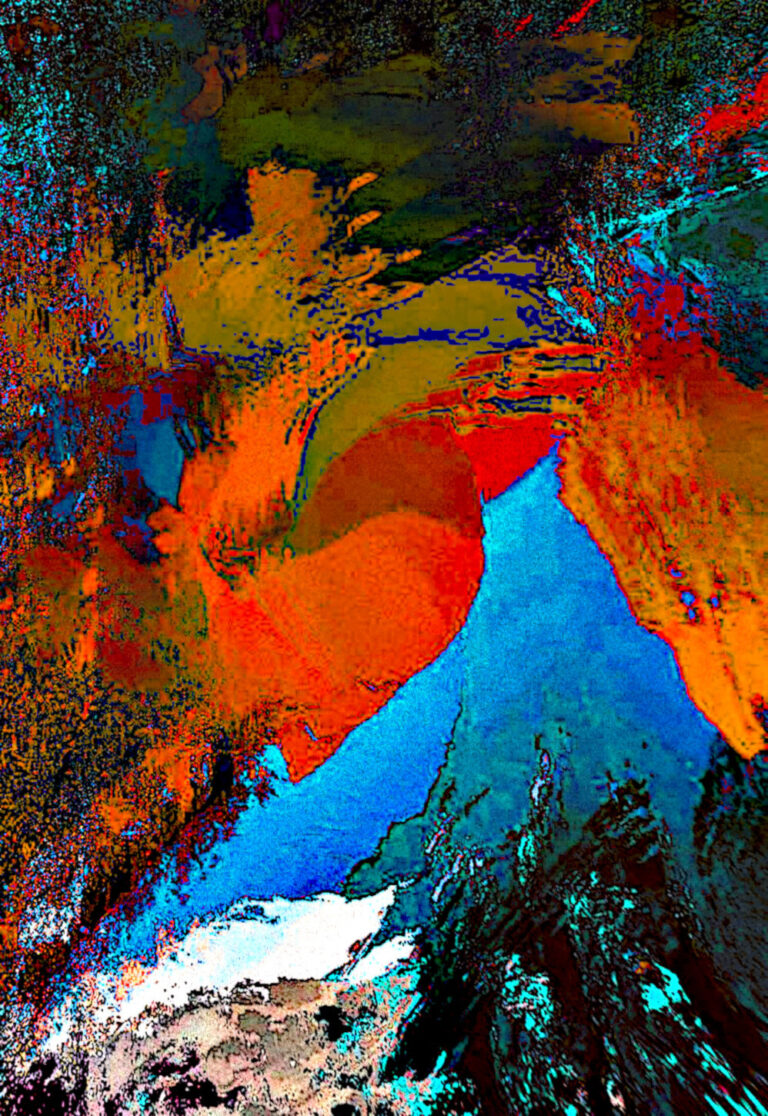We don’t know which way we go

Creating visual art is one of the defining characteristics of the human species, but the paucity of archaeological evidence means that we have limited information on the origin and evolution of this aspect of human culture.
The components of art include colour, pattern and the reproduction of visual likeness. The 2D and 3D art forms that were created by Upper Palaeolithic Europeans, at least 30,000 years ago, are conceptually equivalent to those created in recent centuries, indicating that human cognition and symbolling activity, as well as anatomy, were fully modern by that time.
The origins of art are therefore much more ancient and lie within Africa, before worldwide human dispersal. The earliest known evidence of ‘artistic behaviour’ is of human body decoration, including skin colouring with ochre and the use of beads, although both may have had functional origins. Zig-zag and criss-cross patterns, nested curves and parallel lines are the earliest known patterns to have been created separately from the body; their similarity to entopic phenomena (involuntary products of the visual system) suggests a physiological origin.
3D art may have begun with human likeness recognition in natural objects, which were modified to enhance that likeness; some 2D art has also clearly been influenced by suggestive features of an uneven surface.
The creation of images from the imagination, or ‘the mind’s eye’, required a seminal evolutionary change in the neural structures underpinning perception; this change would have had a survival advantage in both tool-making and hunting. Analysis of early tool-making techniques suggests that creating 3D objects (sculptures and reliefs) involves their cognitive deconstruction into a series of surfaces, a principle that could have been applied to early sculpture.
The cognitive ability to create art separate from the body must have originated in Africa but the practice may have begun at different times in genetically and culturally distinct groups both within Africa and during global dispersal, leading to the regional variety seen in both ancient and recent art. At all stages in the evolution of artistic creativity, stylistic change must have been due to rare, highly gifted individuals.
Gillian M Morriss-Kay

Art is as ancient as civilization itself. Throughout history, art has benefitted early humans by aiding in communication, education and cooperation. It has also helped us accurately reflect on past society by evoking moments of the bygone eras and traditional art forms through visual stimulus. Our most notable art forms are all steeped in a rich layer of cultural heritage that mirror their times.
How art evolves with time?
It started with 5 basic elements – line, shape, colour, texture and space. But with time, artists realized that art must also reflect quality, detailing and inherent meaning. And, thus began the birth of new styles of art – the evolution of modern art. Representational art, such as the painting of fruits or pretty flowers, is merely for visual appeal that doesn’t go any deeper.
But some art forms, like contemporary paintings or expressionism paintings, tell a story by provoking specific emotions, while others make a statement. And some may act as metaphors, featuring multiple meanings that don’t always meet the eye.
Why does art change over time?
The most important influence on art is society itself. Just like human beliefs, art changes over time. Being an archive of society’s collective memory, its movement shifts with the artists who bring them to life. And besides the medium or emotions evoked, history adds its own layer of mystique. The era, societal beliefs, perspectives, emotional states, current events, religion and politics play a role in the art’s direction. Hence, when we inspect art and scrutinize its details, we rewind time and experience a different period.
How has art shaped the modern world?
Today, art is being bought and sold at auctions around the globe through art galleries online and offline. And as part of the globalizing world, it acts as a representation of our unique cultures and individual tastes. Having made its way into our hearts and homes, it is now an everyday encounter, whether through painting, photograph, film, play or song. It has inspired us and motivated us, reminding us of what’s possible and what we’re capable of as a species. It has made us more human.

IGNORANCE MORE FREQUENTLY BEGETS CONFIDENCE THEN DOES KNOWLEDGE
CHARLES DARWIN
Evolution refers to the gradual process of change and adaptation that living things undergo over time while art refers to the creative expression of human emotions, ideas and imagination. Together they form a powerful combination that has shaped and reflected human culture and identity throughout the ages.
The earliest forms of art, such as cave paintings and sculptures, date back to prehistoric times and are considered some of the earliest expressions of human creativity. As humans evolved and developed new technologies, so did their art. From the classical masterpieces of ancient Greece and Rome to the Renaissance masterpieces of the 15th and 16th centuries, art has always been a reflection of the time and culture in which it was created.
Throughout history, art has also played a role in shaping cultural values and beliefs. For example, religious art has been used to depict and disseminate religious messages, while political art has been used to make statements about power and social issues. In this way, art has helped shape the cultural and social evolution of societies.
Art has also evolved over time. With the advent of new technologies, artists have been able to experiment with new materials and techniques, leading to new forms of expression and creativity. From the impressionist paintings of the 19th century to the digital art of today, art has continued to evolve and adapt to new technological innovations.
Art and evolution have a dynamic and ever-changing relationship. Art has reflected and shaped human culture and identity, while at the same time evolving and adapting to new technologies and cultural influences. Art continues to play a vital role in shaping our understanding of the world and our place in it, making it a valuable and enduring aspect of human evolution.